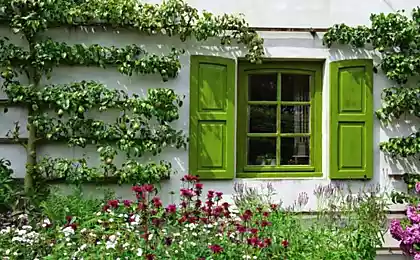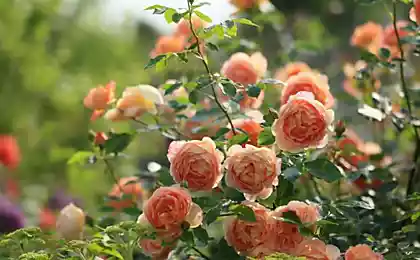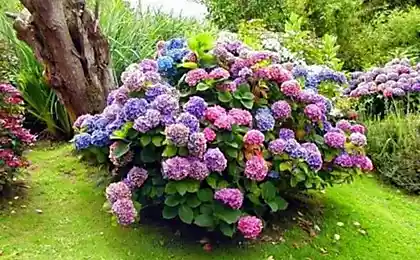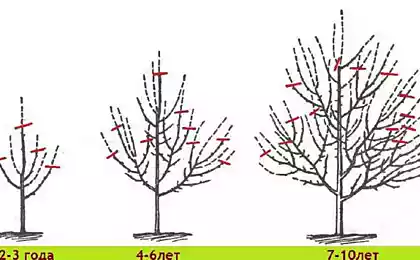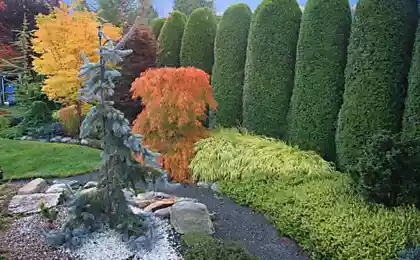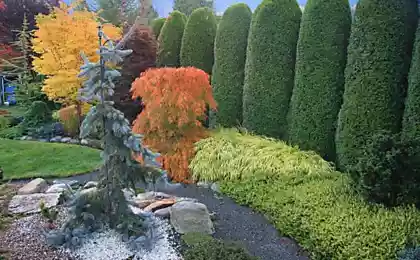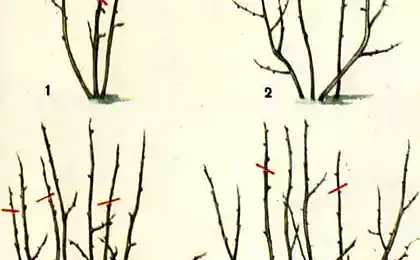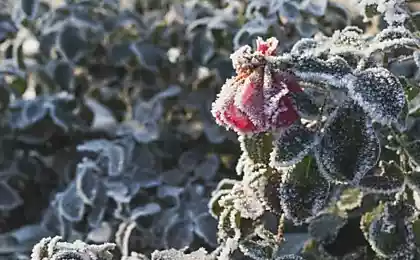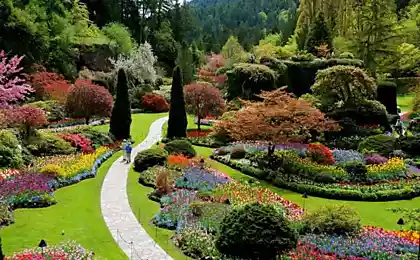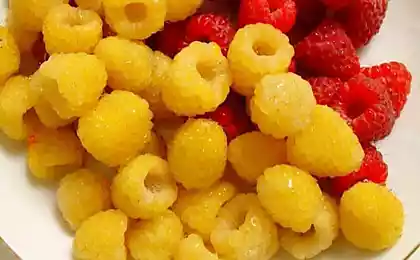639
The secrets known to gardeners: how to rejuvenate old garden properly:
What is the Association we have an old garden? First of all, this is an old, abandoned orchards, sadly glorified in the works of Russian writers and poets, Russian romances; our understanding of how a lot of the old garden in my lifetime and how many secrets he keeps under the shadow of his overgrown trees. Maybe the thought of how many secrets were revealed in it, and wept tears.
Cosy corners of the garden, hid from prying eyes and gave the joyful moments of intimacy. And even if this is your old garden, it can give the childhood memories and to recall important events of your life. Now that you have grown, matured, you wanted change. And the garden need to be updated.
It also happens that people are not dealing with the garden of his childhood, and he just got them originally in the old form, then to reconstruct it will be not so sorry, though the best in the old garden still should be retained. Specialist growers consider it advisable to resort to the rejuvenation of the garden, when the trees reach 18-20 years of age and older, when significantly decreases the yield and deteriorates the quality of fruits, and annual increments are only 10-12 cm
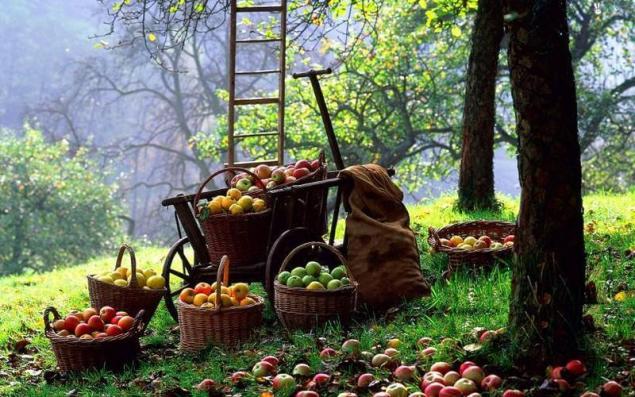
To correctly Orient the readers, we give first the opinions of famous gardeners and designers on this issue.
The uprooting of trees and shrubs.First of all, it must be remembered that the old garden needs periodic renovation. In the adult Mature, fruit bearing garden weeding should be done systematically: it is the uprooting of the old and significant selective pruning of individual trees and shrubs. Sometimes, though rarely, happens that a tree has to be uprooted after heavy damage by mice, rabbits, other pests or diseases. Sometimes, part of the crown collapses under the weight of the crop and wind. Here it is necessary to consider how best to proceed: whether to remember it (although this is generally difficult), or to completely remove that part.
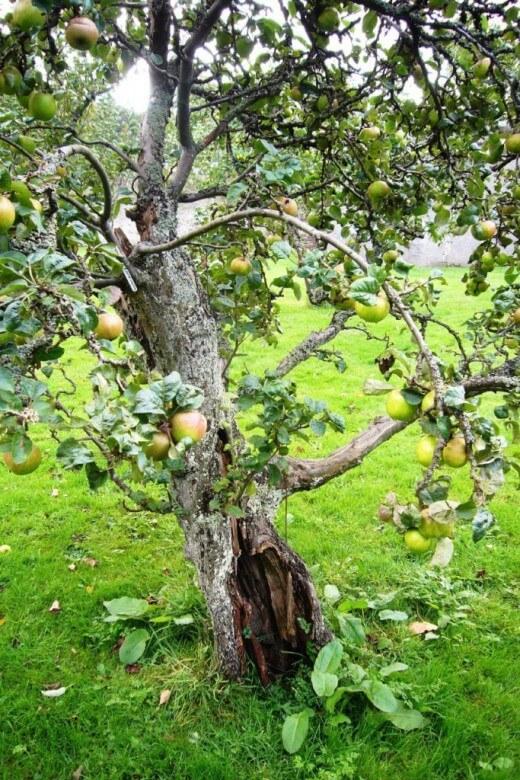
A positive factor in the uprooting of dead, old, sick, not winter-hardy fruit trees the one in the garden immediately released a large area that can be used for planting other crops, depending on their demands to light.
Pruning of trees.It leads, first of all, to improve the illumination of the garden. Exercise, for example: on the South side of the site should be frost-resistant tree, cut off all his new crown pereplevyvaet one or more varieties. Adult garden usually produces reasonable yields, so it is possible to apply severe pruning of any of the sides of the crown of one or more trees. For this saw and remove years of almost skeletal branches at their base or taking them on a lateral branch. Sometimes it requires severe pruning one side of the crown of a tall tree that obscures the less tall, but more valuable.
Happens and so that the grower sees that one of the paths in the garden are well lit by the sun, and decides to use it for planting any light-requiring crops, of course, adding to this place a sufficient quantity of nutritious soil. The new track he lays under the canopy of adult trees, cutting off individual branches, under the shade and not giving a harvest of good quality.
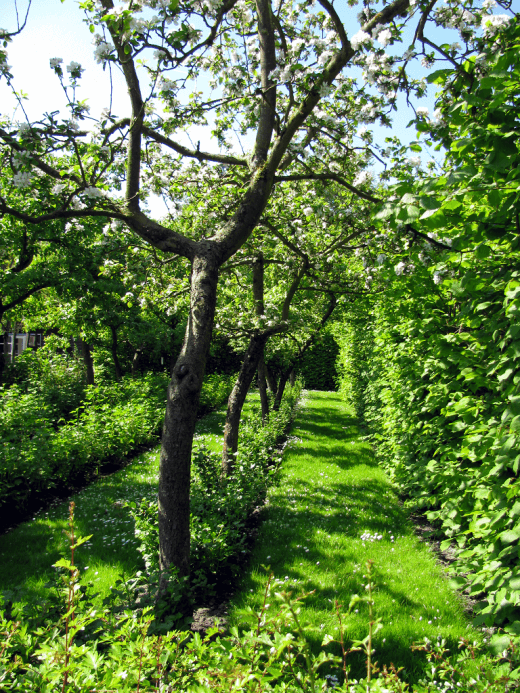
To remove part of the crown or the whole tree is not necessary in the early spring and not late autumn, when plants are without leaves, and in the period when they provide the most shade. This is usually done in the fall, after harvest.
The gardeners should be mindful of the need for periodic changes of places of cultivation of berry bushes. So, after 10 – 12 years rascherchivayut bushes of blackcurrant and after careful fertilization new plants are planted in between the old landing. The old landing raspberry also replaced with a new one, but assign them new seats. In one place the raspberries can be grown not more than 12 years.
That is known throughout the country gardener B. A. Popov.
There is another wonderful person, a scientist with extensive experience in horticulture, known to many gardeners, research associate of Department of selection of all-Russia selection-technological Institute of horticulture and nursery of the Russian Academy of agricultural Sciences Anatoly Mikheev, the recommendations of which in the rejuvenating gardens need to listen.
So, an experienced scientist is not advised to immediately get rid of all the junk in the old garden. You need to carefully observe the life of the garden and only then proceed to its reconstruction.First, carefully examine each tree. The reasons why trees must be uprooted, if they are hollow, the bark dies and cracks badly lagging behind the annual growth is weak (not more than 10 cm).
A single tree is easiest to cut at 40-50 cm from the ground. If it is surrounded by other trees, shrubs, it is necessary first to cut boughs (from bottom), and then remaining bare trunk, but not at the surface and at a height of about 1.5 m: so it will be easier to shake when the grubbing.
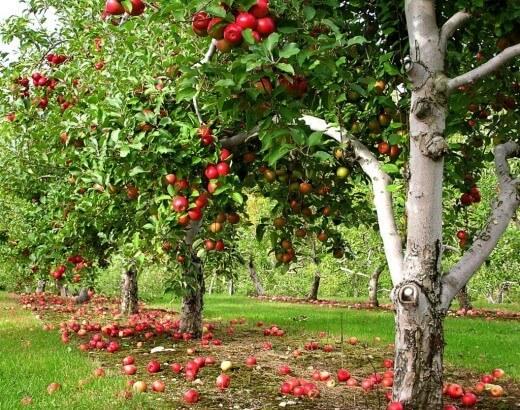
It is recommended to use this simplified way of Korchevaya trees using ammonium nitrate: speel wood, low, hollow in a tree stump deepening (better to drill out drill a few holes), pour in it two handfuls of ammonium nitrate, cover with a plastic bag and tie with string. For the month nitrate corrode the wood and turn it into dust. The place, if not shade the other trees, you can plant a new plant. It is important to remember about crop rotation and the self-fertility of varieties (it is sorta able to tie the fruit without the availability of a number of pollinators):
Next year tops, thickening of the crown, cut the ring, and the remaining are pruned, leaving two to three lateral buds. Trim ring is that when pruning did not have any papillae, and the cut was smooth and without rupture of the surrounding crust. From growing shoots and form a crown. After two or three years it will be possible to collect large fruit.
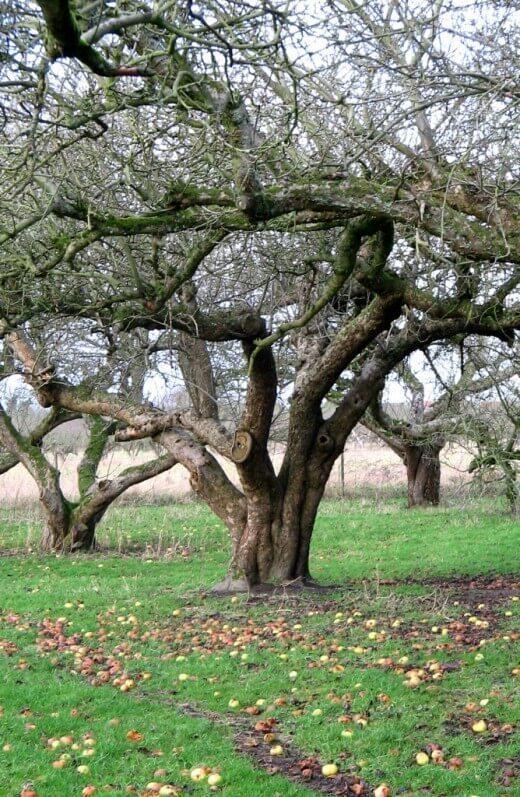
In the old garden, to cultivate promising varieties by perepravki part of the skeletal branches in the old tree. Fit and tops. However, vaccination will have to do very much to new varieties accounted for a significant part of the crop. Use perepisyvat obvious: thanks to a mutual pollination of several varieties of fruits are tied better and improves their quality.
If you inherited an old garden grow amelanchier, Aronia (Aronia), wild hawthorn and Rowan, to get rid of them you should not. These plants can be grafted pear cultivars (‘Velez’, ‘Chizhovsky’, ‘Thumbelina’, ‘Prominent’). They will not be as durable as grafted on a wild pear – live 15-20 years, but already in the third year will give a good harvest.
In the case of planting only one tree of cherry or plum it is recommended to choose samoplodnye variety, which does not require cross-pollination (cherry – ‘Youth’, ‘bulatnikovskaya’, ‘Rastorguevsky’, ‘Memory Enikeeva’, ‘Rusinka’; plum – ‘Morning’, ‘Egg blue’, ‘Blue gift’, ‘Alexis’). Or crown are self-fruitless varieties that say ‘Early’, to instill a variety of pollinator – for example, ‘Red ball’ or any of the varieties of the cherry plum (for the suburbs recommended ‘Kubanskaya Kometa’, ‘Traveler’, ‘Cleopatra’, ‘the Golden fleece’).
You must remember that all sweet cherries are self-fruitless, and the only tree to bear fruit, it is necessary to plant two or three other varieties. Thus, the tree will look very nice if vaccinations will be able to select varieties with different colored fruits, for example, dark red (‘Fatezh’), pink (‘pink Bryansk’) or yellow (‘Chermesina’). Note that the cuttings or saplings of the above varieties can be bought in nurseries or in stores.
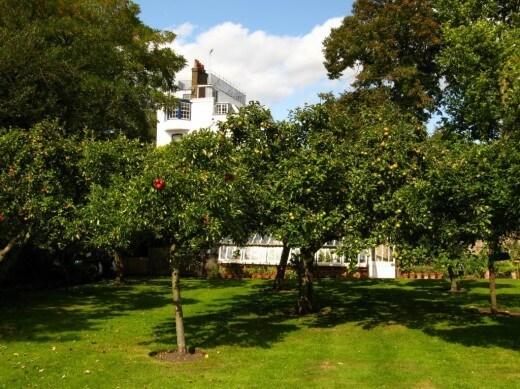
Berry bushes in the old garden also require rejuvenation. To carry out this work better in the fall. For example, currants and gooseberries can grow and bear fruit in one place for 10-12 years. Age annual gains weakened, reduced yield and quality of berries. It is recommended that the bushes are older than 12-15 years to uproot and burn. On the released areas it is best to plant other crops — raspberries, vegetables, ornamental shrubs.
But you can do another thing: to remove all the aboveground part of the berry bushes, and branches grows to form a new young crown, shortening 1-2-year increments for 4-8 kidneys. Or: cut to the ground old 5-7-year-old branches and shorten side branch 3-4-year-old branches and thin out the bushes, removing weak branches and thickening. After rejuvenating pruning currants and gooseberries will give a yield of 5-6 years.
We wish you to successfully rejuvenate your old garden! published
P. S. And remember, only by changing their consumption — together we change the world! © Join us at Facebook , Vkontakte, Odnoklassniki
Source: botanichka.ru/blog/2014/08/29/garden-17/
Cosy corners of the garden, hid from prying eyes and gave the joyful moments of intimacy. And even if this is your old garden, it can give the childhood memories and to recall important events of your life. Now that you have grown, matured, you wanted change. And the garden need to be updated.
It also happens that people are not dealing with the garden of his childhood, and he just got them originally in the old form, then to reconstruct it will be not so sorry, though the best in the old garden still should be retained. Specialist growers consider it advisable to resort to the rejuvenation of the garden, when the trees reach 18-20 years of age and older, when significantly decreases the yield and deteriorates the quality of fruits, and annual increments are only 10-12 cm

To correctly Orient the readers, we give first the opinions of famous gardeners and designers on this issue.
The uprooting of trees and shrubs.First of all, it must be remembered that the old garden needs periodic renovation. In the adult Mature, fruit bearing garden weeding should be done systematically: it is the uprooting of the old and significant selective pruning of individual trees and shrubs. Sometimes, though rarely, happens that a tree has to be uprooted after heavy damage by mice, rabbits, other pests or diseases. Sometimes, part of the crown collapses under the weight of the crop and wind. Here it is necessary to consider how best to proceed: whether to remember it (although this is generally difficult), or to completely remove that part.

A positive factor in the uprooting of dead, old, sick, not winter-hardy fruit trees the one in the garden immediately released a large area that can be used for planting other crops, depending on their demands to light.
Pruning of trees.It leads, first of all, to improve the illumination of the garden. Exercise, for example: on the South side of the site should be frost-resistant tree, cut off all his new crown pereplevyvaet one or more varieties. Adult garden usually produces reasonable yields, so it is possible to apply severe pruning of any of the sides of the crown of one or more trees. For this saw and remove years of almost skeletal branches at their base or taking them on a lateral branch. Sometimes it requires severe pruning one side of the crown of a tall tree that obscures the less tall, but more valuable.
Happens and so that the grower sees that one of the paths in the garden are well lit by the sun, and decides to use it for planting any light-requiring crops, of course, adding to this place a sufficient quantity of nutritious soil. The new track he lays under the canopy of adult trees, cutting off individual branches, under the shade and not giving a harvest of good quality.

To remove part of the crown or the whole tree is not necessary in the early spring and not late autumn, when plants are without leaves, and in the period when they provide the most shade. This is usually done in the fall, after harvest.
The gardeners should be mindful of the need for periodic changes of places of cultivation of berry bushes. So, after 10 – 12 years rascherchivayut bushes of blackcurrant and after careful fertilization new plants are planted in between the old landing. The old landing raspberry also replaced with a new one, but assign them new seats. In one place the raspberries can be grown not more than 12 years.
That is known throughout the country gardener B. A. Popov.
There is another wonderful person, a scientist with extensive experience in horticulture, known to many gardeners, research associate of Department of selection of all-Russia selection-technological Institute of horticulture and nursery of the Russian Academy of agricultural Sciences Anatoly Mikheev, the recommendations of which in the rejuvenating gardens need to listen.
So, an experienced scientist is not advised to immediately get rid of all the junk in the old garden. You need to carefully observe the life of the garden and only then proceed to its reconstruction.First, carefully examine each tree. The reasons why trees must be uprooted, if they are hollow, the bark dies and cracks badly lagging behind the annual growth is weak (not more than 10 cm).
A single tree is easiest to cut at 40-50 cm from the ground. If it is surrounded by other trees, shrubs, it is necessary first to cut boughs (from bottom), and then remaining bare trunk, but not at the surface and at a height of about 1.5 m: so it will be easier to shake when the grubbing.

It is recommended to use this simplified way of Korchevaya trees using ammonium nitrate: speel wood, low, hollow in a tree stump deepening (better to drill out drill a few holes), pour in it two handfuls of ammonium nitrate, cover with a plastic bag and tie with string. For the month nitrate corrode the wood and turn it into dust. The place, if not shade the other trees, you can plant a new plant. It is important to remember about crop rotation and the self-fertility of varieties (it is sorta able to tie the fruit without the availability of a number of pollinators):
- you cannot plant an Apple tree after Apple tree, pear after pear, and plum after plum;
- at the place of the uprooted Apple tree needs to grow cherry, plum, pear and other trees of the same.
Next year tops, thickening of the crown, cut the ring, and the remaining are pruned, leaving two to three lateral buds. Trim ring is that when pruning did not have any papillae, and the cut was smooth and without rupture of the surrounding crust. From growing shoots and form a crown. After two or three years it will be possible to collect large fruit.

In the old garden, to cultivate promising varieties by perepravki part of the skeletal branches in the old tree. Fit and tops. However, vaccination will have to do very much to new varieties accounted for a significant part of the crop. Use perepisyvat obvious: thanks to a mutual pollination of several varieties of fruits are tied better and improves their quality.
If you inherited an old garden grow amelanchier, Aronia (Aronia), wild hawthorn and Rowan, to get rid of them you should not. These plants can be grafted pear cultivars (‘Velez’, ‘Chizhovsky’, ‘Thumbelina’, ‘Prominent’). They will not be as durable as grafted on a wild pear – live 15-20 years, but already in the third year will give a good harvest.
In the case of planting only one tree of cherry or plum it is recommended to choose samoplodnye variety, which does not require cross-pollination (cherry – ‘Youth’, ‘bulatnikovskaya’, ‘Rastorguevsky’, ‘Memory Enikeeva’, ‘Rusinka’; plum – ‘Morning’, ‘Egg blue’, ‘Blue gift’, ‘Alexis’). Or crown are self-fruitless varieties that say ‘Early’, to instill a variety of pollinator – for example, ‘Red ball’ or any of the varieties of the cherry plum (for the suburbs recommended ‘Kubanskaya Kometa’, ‘Traveler’, ‘Cleopatra’, ‘the Golden fleece’).
You must remember that all sweet cherries are self-fruitless, and the only tree to bear fruit, it is necessary to plant two or three other varieties. Thus, the tree will look very nice if vaccinations will be able to select varieties with different colored fruits, for example, dark red (‘Fatezh’), pink (‘pink Bryansk’) or yellow (‘Chermesina’). Note that the cuttings or saplings of the above varieties can be bought in nurseries or in stores.

Berry bushes in the old garden also require rejuvenation. To carry out this work better in the fall. For example, currants and gooseberries can grow and bear fruit in one place for 10-12 years. Age annual gains weakened, reduced yield and quality of berries. It is recommended that the bushes are older than 12-15 years to uproot and burn. On the released areas it is best to plant other crops — raspberries, vegetables, ornamental shrubs.
But you can do another thing: to remove all the aboveground part of the berry bushes, and branches grows to form a new young crown, shortening 1-2-year increments for 4-8 kidneys. Or: cut to the ground old 5-7-year-old branches and shorten side branch 3-4-year-old branches and thin out the bushes, removing weak branches and thickening. After rejuvenating pruning currants and gooseberries will give a yield of 5-6 years.
We wish you to successfully rejuvenate your old garden! published
P. S. And remember, only by changing their consumption — together we change the world! © Join us at Facebook , Vkontakte, Odnoklassniki
Source: botanichka.ru/blog/2014/08/29/garden-17/
Breathing exercises Strelnikova: a unique method of healing!
Minimalism or a few words about hygiene consumption



